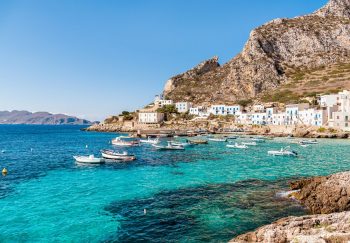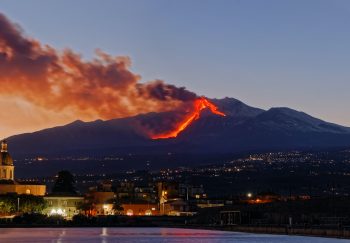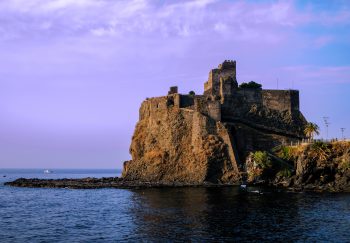Is this your piece of paradise? It’s here!
The stunning beauty of the Pelagie Islands‘s crystal-clear waters, their natural landscape, and their depths with tropical fauna, an incredible variety of fishes, including groupers, mackerels, triggerfishes, and parrotfishes.
Lampedusa is combined with Linosa & Lampione to form the Pelagie archipelago. This name comes from the Greek Pelaghie, which means “Islands of the high seas”, shards from African land that emerged from the Mediterranean Sea.
Linosa is an island near Lampedusa that has volcanic rocks and blacks, caused by an explosion of lava.
Linosa , Faraglioni – Ph Mannarano
The beaches of this area are rugged and black and lead to a deep green sea. Discover its amazing seabeds. The islanders tell their stories and provide a shortening of the daily routines.
Piscina Naturale, Linosa – Ph Mannarano
Lampedusa can be both beautiful and harsh. The island’s urban center offers all the tourist entertainment you need: restaurants on the beach, accommodation for tourists, and rental of transportation (cars, bikes, electric or gasoline scooters). If you want to be alone, there are quiet areas that offer solitude and stillness. You can get a Mehari or driver in the interior island. Here, different styles mix while respecting the island’s spirit.
You have many options with its 12 beaches. Cala Galera Cala Francese Cala Greca Cala Creta, Cala Galera Cala Galera Cala Galera Cala Galera Cala Galera Cala Galera Cala Galera Cala Galera Calo Galera Cala Galera Cala Galera Cala Galera Cala Galera Cala Galera Cala Galera Cala Galeria Cala Galera The view from Cala Creta is said to take your breath away. This is where the essence of Lampedusa will be felt.
Island of Rabbits – Isola dei Conigli
The Isle of Rabbits is located just a few metres from Lampedusa’s west coast, right next to a beautiful sandy beach.
Contrary to what some may think, there is no evidence of rabbits on this small piece of wild and rocky land. However, it is easier to find loggerhead turtle eggs laid on the beach nearby. Because it is so close to the Island, Spiaggia dei conigli is called “Rabbits Beach” and it is one of the last nesting sites for this rare reptile.
The name of the Island and its namesake beach are actually a result of a misinterpretation of an ancient cartography. It reported Rabit Island’s name, which was incorrectly translated from the English word Rabbit (coniglio).
Most likely, the term “rabbit” is not used to refer to a small animal. It is derived from an Arabic phoneme that is very similar. This can be translated as “connection” with reference the isthmus, which sometimes runs between the coast and the islet.
No matter what name you choose, one thing is certain in this idyllic paradise: the triumph of nature’s magnificence, the beauty of beaches, the view, and the incredible crystal-clear water that transforms into a natural swimming pool.



